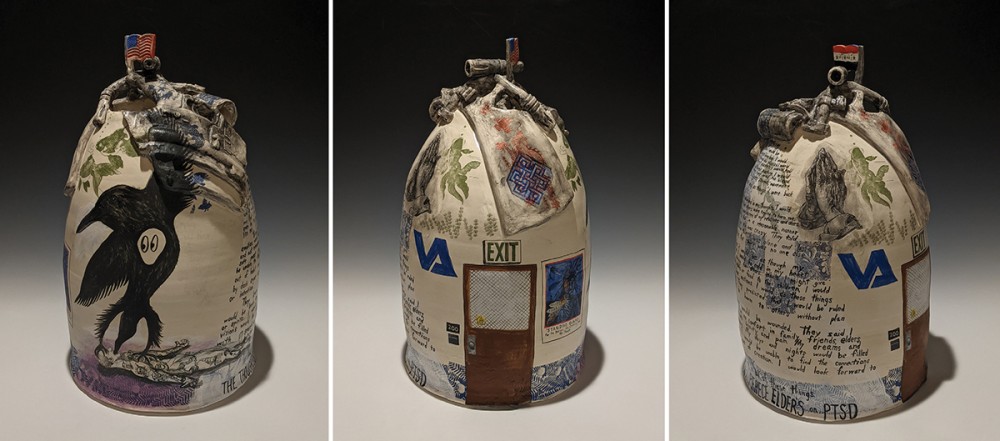Room 200 (2020), by Jesse Albrecht

Jesse Albrecht is at home with unsettling thoughts. Since completing military service in Iraq, he has struggled with post-traumatic stress disorder. In 2019, he spent seven weeks in an inpatient trauma recovery unit at a Veterans Affairs hospital in Montana. That space is depicted in the vase Room 200, produced the following year, which represents both a psychological and artistic breakthrough for the artist.
At the base of the work, the artist’s naked, tattooed body lies supine in savasana: corpse pose. From his mouth rises a giant crow, a key archetype for the peoples of the Northern Plains. Rather than a harbinger of death, as it is often read in Western culture, the giant bird seems to signal the potential for new life and wisdom, pulled from the jaws of trauma. It is fitting to learn that a sweat lodge ceremony, led by Native American veterans, constituted a turning point in the artist’s recovery.
It would be reductive to label Albrecht’s sophisticated ceramic practice as art therapy. But it has certainly provided an arena in which to excavate and process images and memories from combat. Religious imagery crops up frequently in this effort, drawn from a diverse array of traditions. The book of Revelation provides one recurring source. Albrecht intermixes references to the beast, the Four Horsemen, and other iconic figures with reminders of more recent hellscapes, including the torture of Iraqi prisoners by US soldiers at Abu Ghraib prison.





